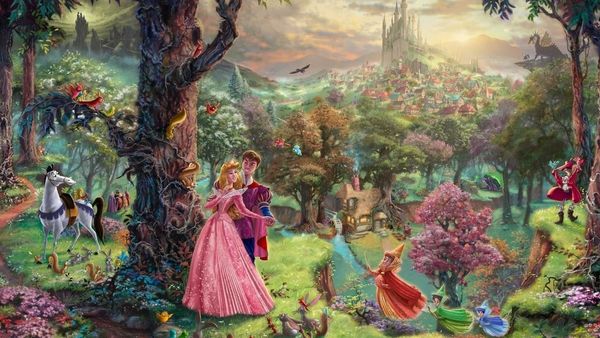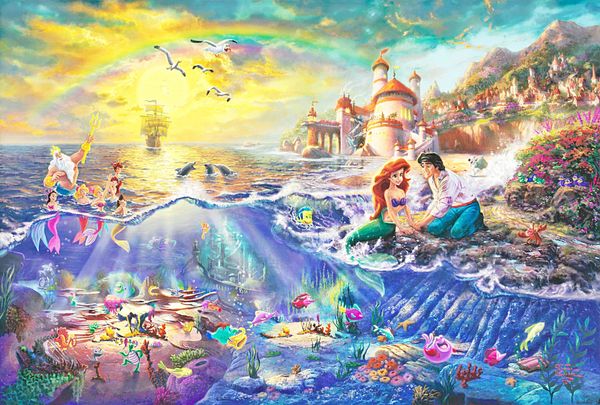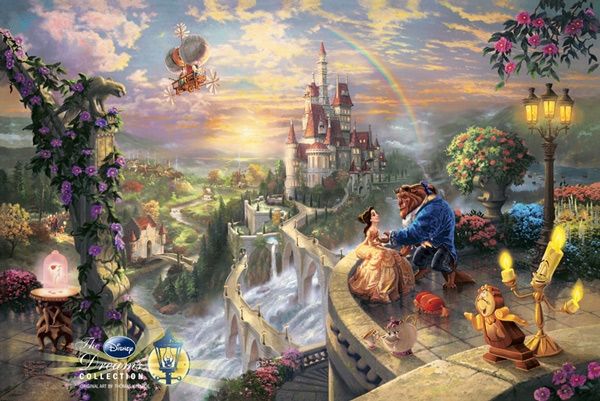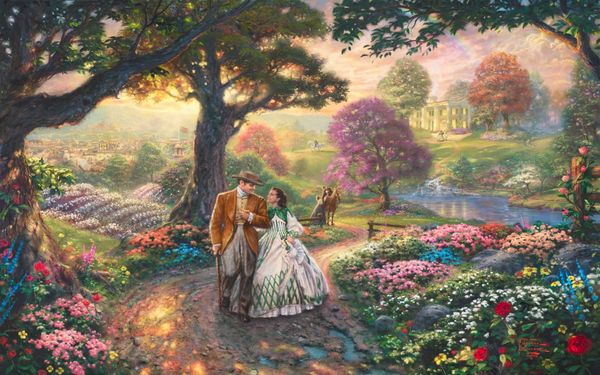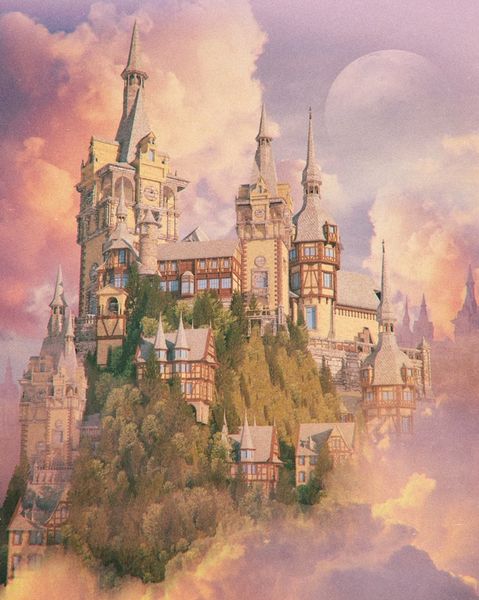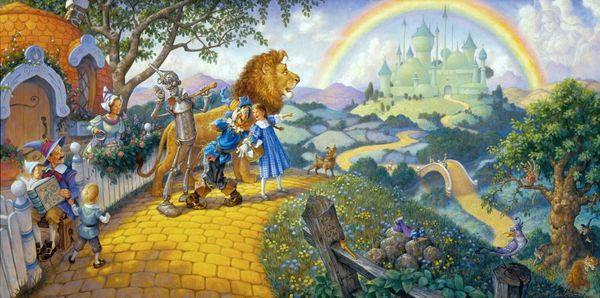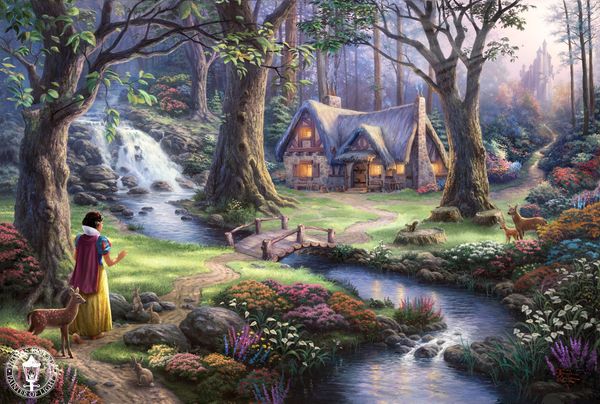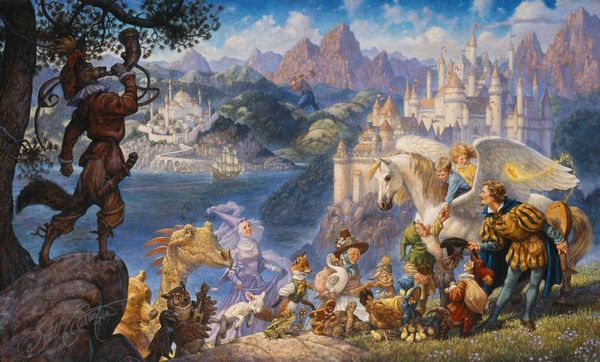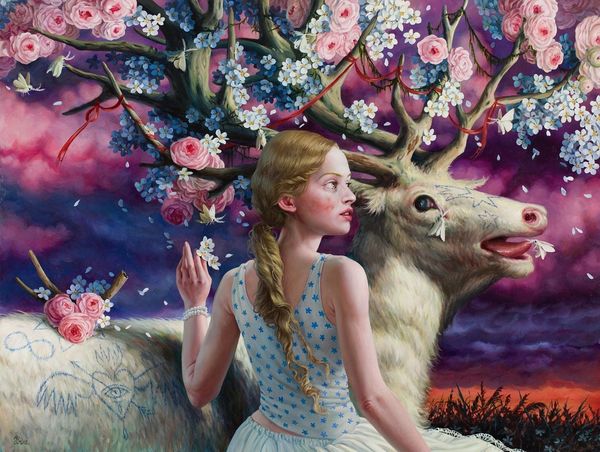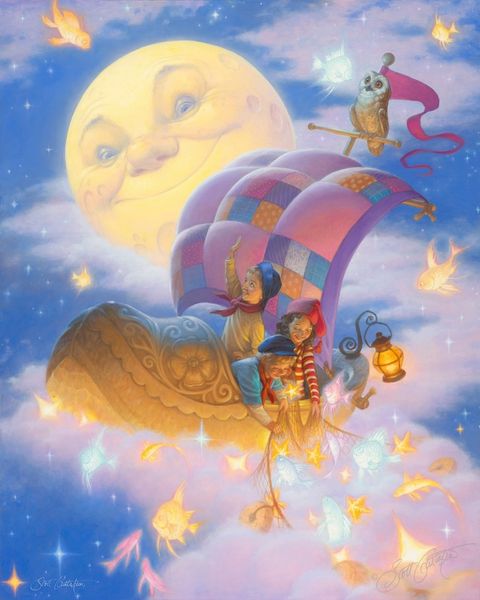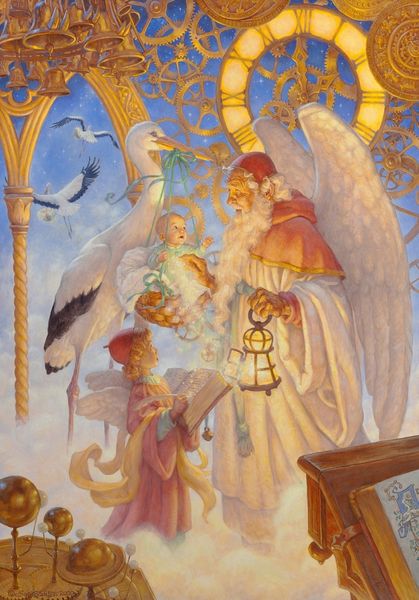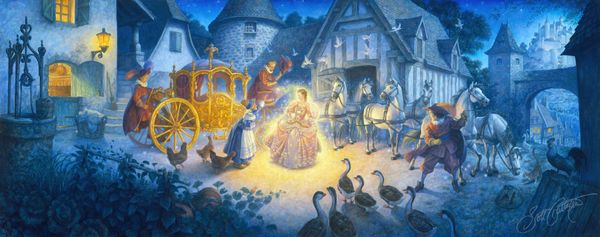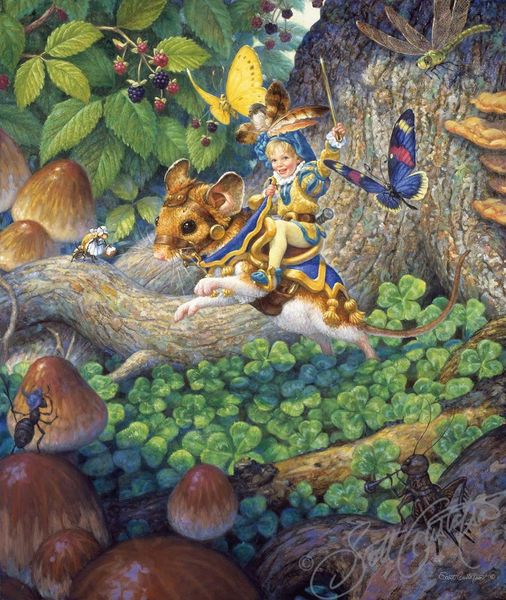
painting, acrylic-paint
#
narrative-art
#
fantasy art
#
painting
#
landscape
#
fantasy-art
#
acrylic-paint
#
figuration
#
romanticism
Copyright: Thomas Kinkade,Fair Use
Curator: Thomas Kinkade is the artist behind this painting, "Cinderella Wishes Upon A Dream." It presents a fairytale scene rendered in acrylic on canvas, though the precise date remains unspecified. Editor: Immediately, the scene feels overwhelmingly… saccharine. It's pure fantasy, completely removed from any discernible reality, with that almost aggressively glowing light. Curator: Well, let's consider what these ubiquitous images might signify. Look at the light; how does Kinkade employ light and shadow? The near-absence of shadow creates this unreal atmosphere. Editor: Exactly! It's calculated, this pervasive use of light as a visual shorthand for purity, hope, and ultimately, manufactured happiness. Think about the viewers' assumed aspirations as consumers, longing for an escape from the mundane through art made accessible through mass reproduction. Curator: And the figures of Cinderella and Prince Charming, what symbolic weight do they carry in this dreamscape? Their idealized forms speak volumes about cultural desires. Cinderella is poised in what almost reads as mid-curtsy, suggesting submissive gratitude to patriarchal narratives, still. Editor: I see it a little differently. Those figures are just motifs. Consider instead how Kinkade uses visual cues--the bridge, the floral arrangements-- as structures. A painted idyll requires literal foundations. The real work, the skilled craftsmanship is deployed constructing and reproducing that idyllic, picturesque lifestyle in pictorial form. Curator: An interesting consideration of process, but to move it back toward reception: consider the narrative the artwork creates and what those elements, Cinderella and Prince Charming signify culturally, and psychologically over time? Even as these fantasies, the materials speak loudly as visual representations. Editor: Perhaps. I suppose in the end, that interplay of aspiration, labor, material reality is what constitutes its kitsch. Curator: Kitsch it might be, but by examining those visual representations, that kitsch and the meanings encoded therein, we start to unlock why such works resonate so powerfully with mass audiences. The picture and what it holds in its history of symbolic representation, regardless of what any of us may consider as taste or production.
Comments
No comments
Be the first to comment and join the conversation on the ultimate creative platform.
